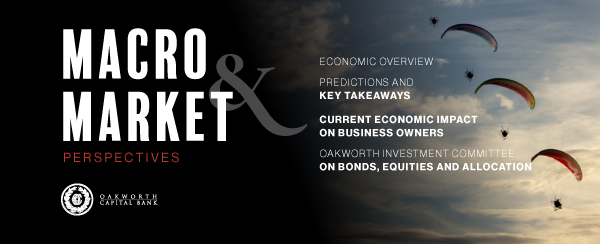INVESTOR OUTLOOK
Despite higher interest rates and tepid economic activity, investors began to realize the worst-case scenario likely wasn’t going to happen. In fact, some sectors of the U.S. economy continued to demonstrate surprising resilience.
PRICE-TO-EARNINGS RATIO
By the end of the quarter, the price-to-earnings ratio had gotten close to, and even exceeded, 20x trailing earnings. As such, stocks were by no means cheap. However, there is an underlying sentiment the markets want to go higher, whether it makes sense or not.
FIXED INCOME
Despite higher rates, which should make bonds more attractive, investors have yet to jump back into fixed income securities. After all, is a U.S. 10-Year Treasury note trading for less than 4.0% really all that attractive when Washington is over $32 trillion in debt?
THE DEBT CEILING
The debt ceiling imbroglio provided plenty of drama – but little substance. Instead of the accumulated debt growing by an estimated $19.9 trillion over the next decade, maybe it will grow by $17-18 trillion instead. You see, Washington budgets much differently than the rest of us.
ARTIFICIAL INTELLIGENCE
Artificial Intelligence (AI) was all the rage during 2nd quarter. Many are concerned AI will eventually make human workers, and eventually our species, redundant. While it will change our lives and how we conduct business, those who don’t learn to adapt to and learn from AI will be the most fungible.
GAS STOVES
Although Americans clearly want Washington out of their kitchens, politicians at the state and local levels continue to push for banning gas stoves (and ultimately other appliances). Although most studies suggest unvented space heaters as the proximate cause of most carbon monoxide poisonings in the home, that isn’t stopping the charge against your stove.
BANK FAILURES
Despite continued turmoil in the bond markets, investors appear to have forgotten about the banking woes from the 1st quarter. It remains to be seen how long this will last.
MASS SHOOTING EPIDEMIC
Through June 18, according to Wikipedia, there had been 176 “mass shootings” in the United States during the 2nd quarter of 2023. These resulted in 194 known fatalities and another 792 injuries. Unfortunately, Americans have become almost desensitized to these horrible occurrences. This is obviously not a characteristic of a society in ascendency.
INFLATION
As advertised, the headline inflation indices all fell during the quarter. The most often-used 12-month Consumer Price Index (CPI) fell from 6.0% in February to 4.0% in May. While a big drop, the so-called core CPI, (food and energy for example) barely budged from 5.5% in February to 5.3% in May.
THE FEDERAL RESERVE
As a result, the Street ended the quarter believing the Federal Reserve will hike the overnight rate another 25 basis points (0.25%) before September 30. Further, investors no longer believe the Fed will be aggressively cutting rates by the end of the year. If current predictions hold true, the overnight rate will end the year where it ended the 2nd quarter, at 5.25%.
CHINA
That the People’s Republic of China is the biggest threat to the United States’ global hegemony is a foregone conclusion. What Washington intends to do about it is still anyone’s best guess. Beijing views the world in decades and centuries. We tend to view it by political election cycles.
LABOR MARKETS
Although the official unemployment rate ticked up slightly during the quarter to 3.7% in May, the labor markets remain very tight. Employers are still having a hard time finding qualified workers and continue to add headcount despite tepid economic activity.
MONEY SUPPLY
As defined by M2, the money supply continues to fall. Further, loans & leases on the books of commercial banks in the United States appeared to hit a brick wall by the end of June. Combined, this suggests the economy should be somewhat choppy during the 3rd quarter. It won’t be dreadful, just choppy. However, we have gotten used to that by now.
For more from our Investment Committee in our 2nd Quarter 2023 Macro & Market Perspectives, click the image below.
The opinions expressed within this report are those of the Investment Committee as of the date published. They are subject to change without notice, and do not necessarily reflect the views of Oakworth Capital Bank, its directors, shareholders or employees.




